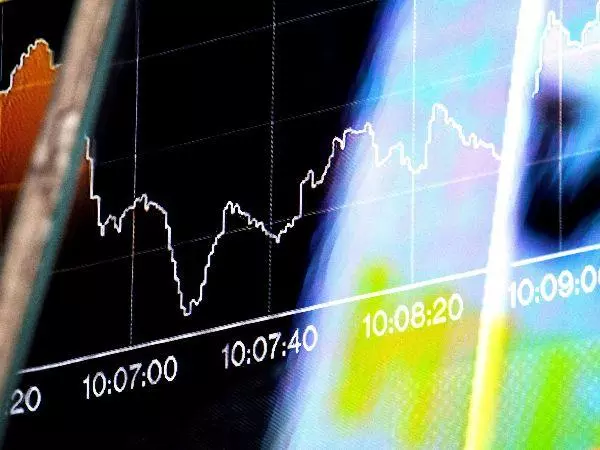What is reflation and how do you trade it?
Reflationary policies seek to pull deflationary economies back into positive territory, but there’s always the risk it could overshoot and lead to long-term inflationary tendencies.

What is reflation and when is it applied?
When an economy suffers a recession, pullback, or a period of uncertainty, deflation – or a period of falling prices – can usually be the result. That, commonly the effect of economic contraction, usually entices policymakers into action to stimulate the economy.

Monetary easing via central banks is one method, the other is fiscal stimulus and increased spending from governments, both trying to halt deflationary pressures and lift the economy. Such policies put in place following an economic recession is known as reflation.
How does it relate to inflation?
The methods that policymakers use include lowering corporate and income taxes, increased infrastructure spending, or as witnessed recently, due to the pandemic, cash handouts in the US on the fiscal policy front. On the monetary front, central banks will lower interest rates to reduce borrowing costs and disincentivise savers.
Furthermore, should there be significant contraction like the Great Recession or the start of the coronavirus pandemic, monetary authorities may opt to purchase government and corporate bonds and lower yields, enticing investors into taking on more risk.
All these policies are considered inflationary in normal times given they can cause prices to rise, the issuing of more fiat currency from central banks weakening paper monetary value in the process.
However, given the fact that these policies are enacted during an economic downturn or periods of significant uncertainty where spending is lower by force (such as being unable to go out due to lockdown restrictions) or choice (preferring to save instead of spend), reflationary policies are used with the aim of halting the deflationary spiral. The end goal is to take prices back up to a long-term trend after periods of low or even negative consumer price index (CPI) readings.

How can you trade reflation and what are the markets to watch?
And given expectations of higher prices and economic growth, cyclical stocks that are economically sensitive to the macroeconomic cycles usually outperform, while growth stocks that rely on lower interest rates tend to underperform.
For with an improved (and especially price-increasing) outlook, rate expectations rise, and that means bonds usually tumble, forcing yields to move higher, especially on longer-dated government securities that haven’t been influenced by central bank strategy that usually targets short-term interest rates and bonds to stimulate the economy in the short term.
Furthermore, supply chain shocks and disruptions in short-term production the likes of which have been witnessed in a few key sectors can result in prices increases, fears of CPI figures overshooting in the future causing investors to reconsider their portfolio and adjust for inflationary fears, especially if too much stimulus (on both the monetary and fiscal policy fronts) causes an overshoot.
That has given the edge to base metals and energy commodities as of late that are priced in the greenback, a currency whose key rate out of its central bank remains at the lows and combined with ongoing easing. Precious metals are usually a hedge against inflation and currency printing thanks to their limited supply, but provide no yield for investors seeking an income stream. As a result, any significant increase in bonds yields, unaccompanied by a large rise in official inflation figures, means that the asset class will face plenty of competition from others that do provide an income.
Where next?
At this stage, the next question is whether central banks will move to control long-term yields and prevent them from rising too fast and too soon, for should that be the case and the already high stock valuations would be at risk, especially growth-related stocks and companies with high debt burdens and in turn, high debt-servicing costs.
Lockdown restrictions and vaccine rollouts will also be noted within the context of economic reopening and the likelihood of growth, their effectiveness against any new strains crucial in ensuring continuity in positive expectations. Supply chain disruptions and rising inputs will be another factor that will test the belief of some central banks as to whether recent price increases are temporary or will turn into a sustained movement.
IGA, may distribute information/research produced by its respective foreign affiliates within the IG Group of companies pursuant to an arrangement under Regulation 32C of the Financial Advisers Regulations. Where the research is distributed in Singapore to a person who is not an Accredited Investor, Expert Investor or an Institutional Investor, IGA accepts legal responsibility for the contents of the report to such persons only to the extent required by law. Singapore recipients should contact IGA at 6390 5118 for matters arising from, or in connection with the information distributed.
The information/research herein is prepared by IG Asia Pte Ltd (IGA) and its foreign affiliated companies (collectively known as the IG Group) and is intended for general circulation only. It does not take into account the specific investment objectives, financial situation, or particular needs of any particular person. You should take into account your specific investment objectives, financial situation, and particular needs before making a commitment to trade, including seeking advice from an independent financial adviser regarding the suitability of the investment, under a separate engagement, as you deem fit.
No representation or warranty is given as to the accuracy or completeness of this information. Consequently, any person acting on it does so entirely at their own risk. Please see important Research Disclaimer.
Please also note that the information does not contain a record of our trading prices, or an offer of, or solicitation for, a transaction in any financial instrument. Any views and opinions expressed may be changed without an update.

European Central Bank meeting
Learn about how the ECB meeting affects interest rates and price stability ahead of the next announcement.
- How might the next meeting affect the markets?
- What are the key rate decisions to watch?
- Why is the Governing Council announcement important for traders?
Live prices on most popular markets
- Forex
- Shares
- Indices
See more forex live prices
See more shares live prices
Prices above are subject to our website terms and agreements. Prices are indicative only. All shares prices are delayed by at least 15 mins.
See more indices live prices
Prices above are subject to our website terms and agreements. Prices are indicative only. All shares prices are delayed by at least 20 mins.

